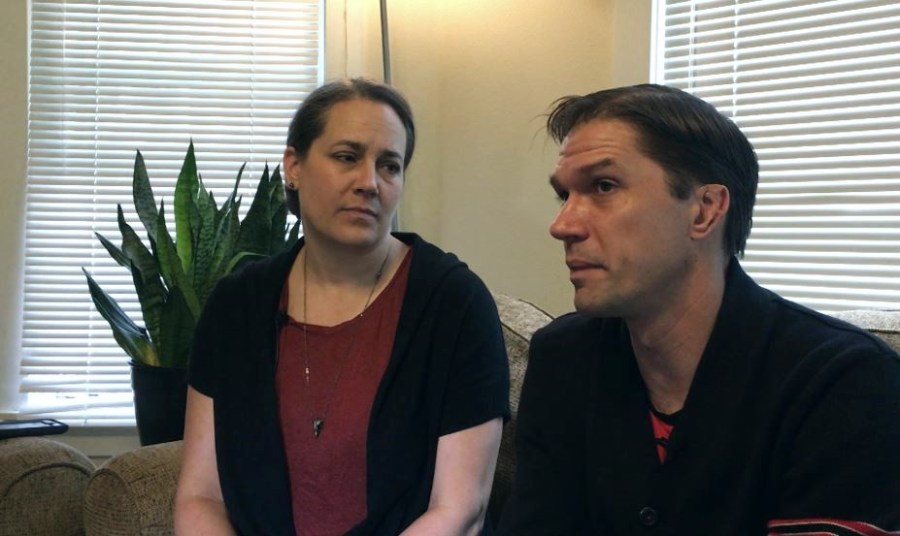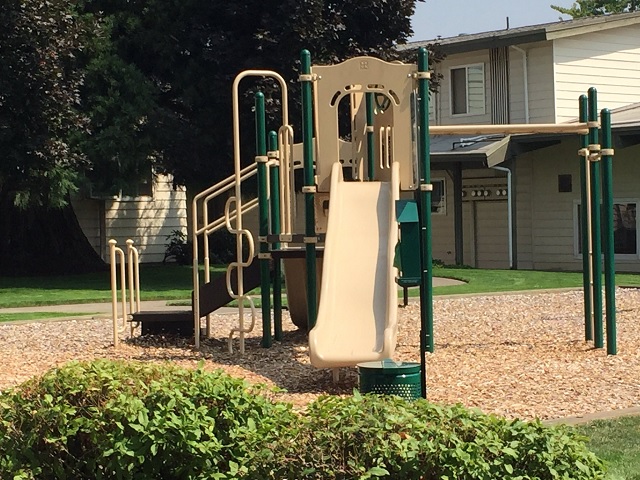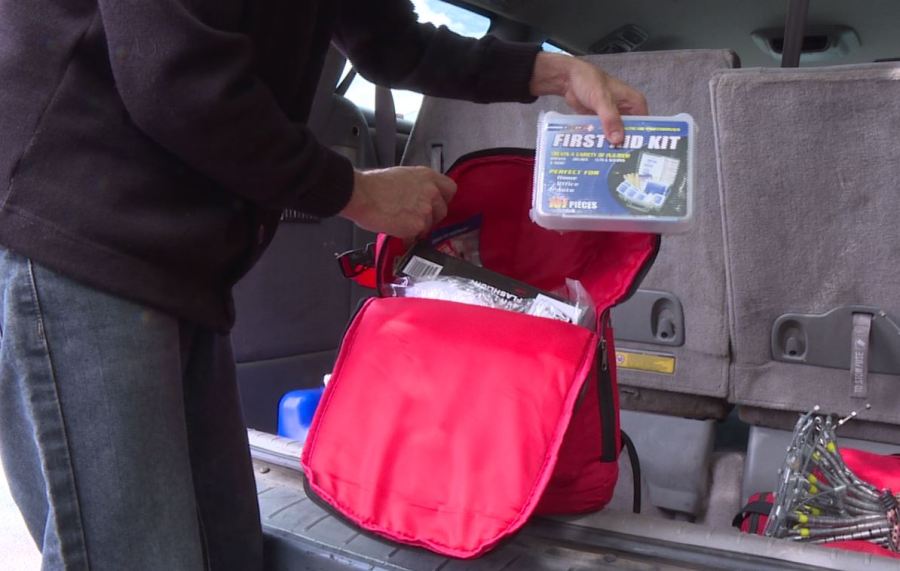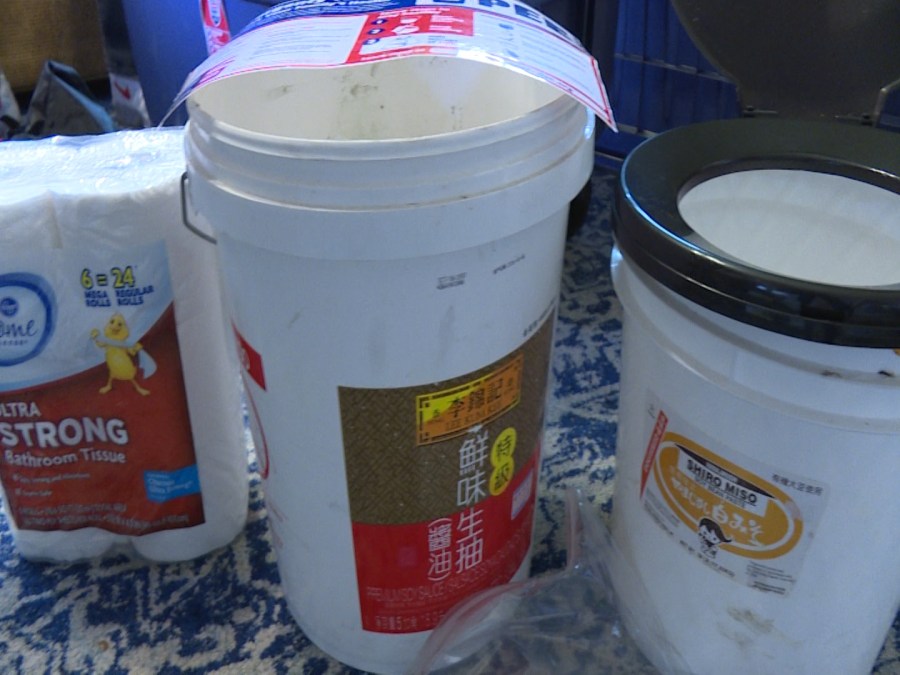PORTLAND, Ore. (KOIN) — When Lydia Ledgerwood-Eberlein thinks about a major earthquake, she thinks about where her family will be.
The most likely scenario puts her three children at school on the other side of the Willamette River, her husband Steve in an office, and herself at home or running errands.
“That creates a big decision point,” Lydia said. “What happens if neither one of us are on the same side of the river as the kids when the earthquake hits?”
Family reunification
Lydia worked alongside Steve Eberlein, the man who would become her husband, in Sri Lanka in 2004 when a 9.1 magnitude subduction zone earthquake struck in the Indian Ocean. The tsunami waves that followed killed nearly 230,000 people in more than a dozen countries.
When Steve and Lydia returned to Oregon a couple of years later, they learned the Pacific Northwest was due for its own earthquake and tsunami disaster. Eventually, this prompted Steve to start Tipping Point Resilience, which specializes in workplace and community preparedness.
But it all starts at home.

In the event of a large scale disaster like a Cascadia earthquake, reuniting with loved ones will be a top concern for most people. But it will also be incredibly difficult since there’s a strong likelihood many bridges and roads will be damaged. People should also be prepared for their cell phones to not work.
That’s why Steve and Lydia stress the importance of a family reunification plan.
“It’s kind of like the center of a chandelier,” Steve said. “Every step that you take in your preparedness planning is for your family.”
“Once you get into family reunification plans you start to realize how difficult if not impossible it is to do on your own,” Lydia said. “You have to start reaching out to your community members.”
That could include family and friends who are in close proximity to your kids’ school, even other parents, Lydia said. “Could they come pick up kids that their parents can’t get to after a few days?”
Designating not one, but three places that your family will attempt to meet up is another important part of the plan.
“You have to have that spot designated,” Steve stressed. “Because if … Lydia and I haven’t had the talk of where we’re gonna reunify, and we go looking for each other, it’s like ships passing in the night.”

Generally, your home would be the first spot to reunify. But in some cases your home might not be safe after an earthquake. So Steve and Lydia chose a local park as the secondary reunification spot.
“It’s a place that our kids know well, we can put up a tent there, it’s within walking distance,” Steve said.
But in case there’s danger at the second spot, he suggests having a third designated location. The key is making sure everyone in your family knows where to go. “Communicate as much as you can before communication goes out,” he said.
“Write it down, have a family meeting, talk to your other communities,” Lydia said.
Prepare to be on your own for two weeks
Your second priority after a disaster will be staying safe and comfortable until help arrives. Oregon’s Office of Emergency Management encourages people to be prepared to be on their own for at least two weeks, which is how long it could take first responders to reach the region after a large earthquake and tsunami destroys many transportation routes.
Families should have three emergency kits; one at home, one at your workplace, and one in your car.

At home, you need 14 gallons of water per person. That’s one gallon a day for drinking, cooking and hygiene. Tip: Water does have an expiration date. You should try to replace it once a year to make sure there’s no bacteria growing in it.
You also need enough food for two weeks. Steve likes Mountain House freeze-dried meals, but Lydia and the kids have a lot of food allergies, and the last thing you want is to get sick post-disaster.
“A lot of stuff that comes in the emergency packs and backpacks it’s just these cubes of literal gluten and soy … it’s just this cube of allergen basically,” Lydia said. So she has equipped the family with large containers of freeze-dried vegetables and instant beans.
“The home kit obviously should be the most robust of your kits,” Steve said, sliding a large cargo box across the floor. It’s jam-packed with dust masks to make breathing safer, gloves for dealing with broken glass and other hazards, tools in case you have to dig things out of the rubble. There’s duct tape and rope, toothbrushes and first aid kits, flashlights and a wind-up radio for listening to government broadcasts. And there are a lot of garbage bags. A lot of garbage bags.
“There’s a sanitation system called the two bucket system,” Lydia said. “Which is a really basic and low-tech but very effective way to take care of your sanitation and bathroom needs when you don’t have toilets and sewers anymore. And so the garbage bags serve as a way to store what you are used to flushing down.”

Two buckets means one bucket for liquid waste and one for solid. You can pick up a couple little toilet seats to make it more comfortable too. You should also get material like sawdust, wood chips or even dried leaves to use as a carbon source to make it safe to store.
“It’s being composted basically,” Lydia said.
Your work and car kits can, of course, be much smaller. But you still want at least a few gallons of water, some food, first aid supplies, emergency blankets, a flashlight, a radio and more. Don’t feel like you can’t dip into your emergency supplies in your day-to-day life either.
“We use it! We go to soccer practice, we forget water, we use that water,” Lydia said.
“I think it’s advisable to keep using your kit,” Steve added. “Make it a part of your life because that helps you keep it up to date.”
If all of this sounds ridiculously expensive, Steve and Lydia understand and advise people to “take it slow” and start with your family reunification plan.
“Start with that because, one, it’s the most important thing to you and for two, it is accessible to everybody,” Steve said. “Everyone can afford to have a conversation. And along the way, you add things to the chandelier.”
Other resources
The Red Cross also has a list of some of the items you should have in your kit.
Parents for Preparedness is an informal network of parents, educators, and community members focused on earthquake safety in schools in the Portland area.
Neighborhood Emergency Teams are volunteers trained by emergency management and fire and rescue officials to provide emergency disaster assistance in their own neighborhoods.
Oregon’s Department of Geology and Mineral Industries has this helpful guide on how to survive earthquakes and tsunamis in Oregon.